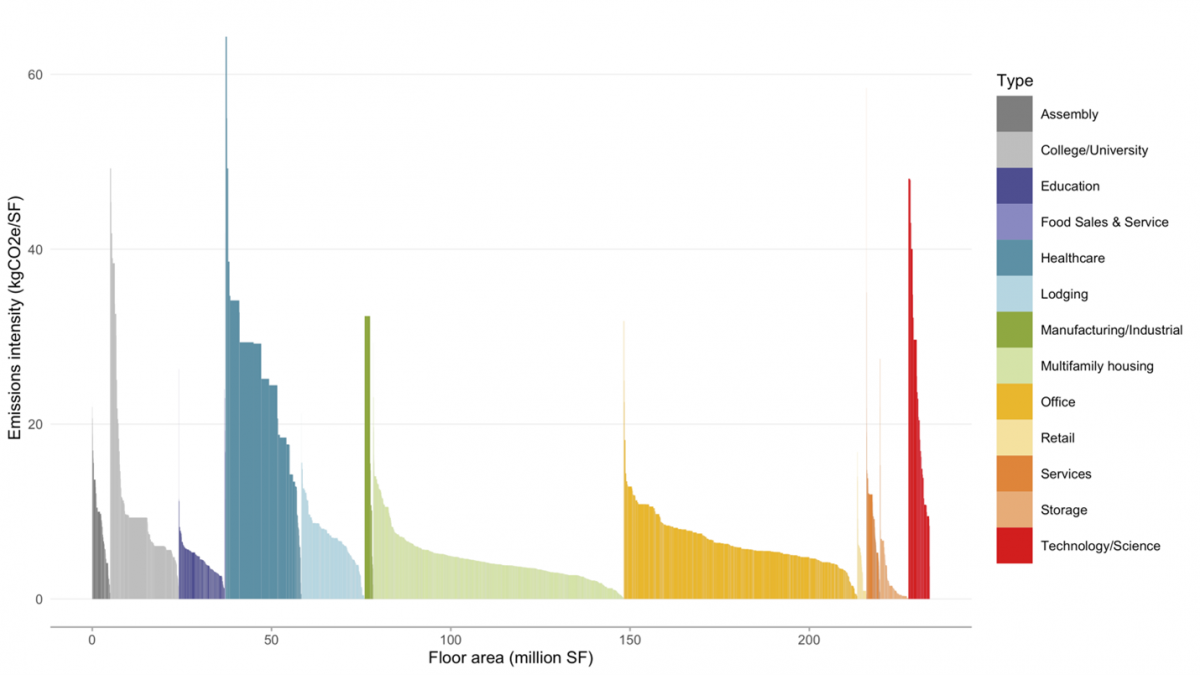Boston’s Emissions Performance Standard to Tackle Net Zero Carbon in Existing Buildings
On February 23, 2021, the City of Boston hosted an open house to review its forthcoming emissions performance standard that will set limits on emissions from energy use in existing large- and medium-sized buildings. This policy is a key strategy for meeting the city’s 2050 goal of carbon neutrality. Existing buildings are responsible for three-quarters of citywide emissions in Boston. Three other U.S. cities have adopted building performance standards—Washington DC, New York City, and St. Louis—but Boston’s policy may be the first to set long-term emissions targets and achieve 100 percent decarbonization. Further, the policy will incorporate a range of innovative and flexible strategies to help building owners drive down emissions, create benefits for occupants, and ensure smart oversight. The draft policy would create multiple compliance pathways, require periodic reporting on environmental justice and equity metrics, create a mayor-appointed emissions review board, establish an equitable investment fund, and more.
“Synapse Energy Economics provided invaluable service in our work to implement the City of Boston’s Climate Action Plan. The Synapse team convened industry experts in our Technical Advisory Group who were critical in advising the City on the development of a building emissions performance standard. Synapse performed high quality and detailed analysis on the projected costs and emission targets to strategically guide the decarbonization of Boston’s largest building. We feel confident that the analysis Synapse provided will assist the City’s ongoing initiative to implement a building emissions performance standard that is crucial to creating a healthy, sustainable, and equitable Boston.” - Benjamin Silverman, Climate and Buildings Program Manager, City of Boston’s Environment Department
Synapse is thrilled to have contributed to this groundbreaking effort. The City of Boston hired us to lead the technical and economic analysis for the performance standard and advise on key areas of policy design. We performed an in-depth building energy analysis to recommend a policy framework and estimate cost impacts for mandatory greenhouse gas emissions targets by building type that decrease over time. Additionally, we convened and facilitated discussions with a technical advisory group of 63 experts in building science, architecture, engineering, construction, building operations, energy policy, renewable energy, and affordable housing—spanning 46 leading organizations in the Greater Boston Area. Using extensive building energy and equipment datasets, Synapse prepared policy recommendations, including proposed emissions targets by building type, example compliance strategies, case studies, and compliance cost estimates. Strategies to reduce emissions include retrofitting existing buildings to be more energy efficient, producing and purchasing renewable energy to power building operations, and switching away from fuels that create greenhouse gas emissions (by electrifying end-uses of energy that rely on combustion of fossil fuels).
We used an in-house building energy performance model to evaluate how the City of Boston can strategically design its building emissions performance standard to cost-effectively meet the 2050 greenhouse gas target and interim goals. The model uses raw data from local buildings to prepare a “bottom-up” assessment of all energy consumed and emissions produced through operation of large- and medium-sized buildings within the city. We analyzed a series of scenarios and sensitivities to compare the long-term decarbonization impacts of various policy designs and develop concrete greenhouse gas reduction pathways for Boston’s building stock. The results of this analysis provide an initial framework for the City to consider discrete policy options, identify areas for further analysis, and evaluate concrete next steps towards its 2050 climate goal.
The figure below shows the 2018 emissions intensity of existing large- and medium-sized buildings in Boston by typology. The difference in in emission profiles highlights the importance of tailoring the policy to the diverse stock of buildings throughout Boston.
Figure 1. Building emissions intensity by typology, BERDO 2018 data

Source: Synapse model using BERDO data. Individual buildings (n = 1502) are plotted as vertical bars, with width proportionate to gross floor area and height proportionate to emission intensity.
Advisory group meeting materials are available on the City's website.